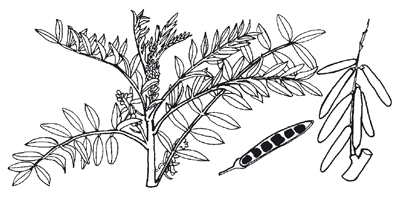The cost and difficulty of obtaining synthetic dyes sometimes makes it impossible to make use of these for regular dyeing of material. If synthetic dyes are available their use is recommended, as they give good and permanent results. However, if synthetic dyes are not available it is possible to use home-made plant dyes. You can dye natural materials like cotton and wool with home-made dyes.
There is a whole variety of plants which can be used to make plant dyes. We can suggest some well known plants found in many countries. However, each area will have its own plants which can be used to make dyes. Ask older people for their advice. Experiment and try out different plants. Different parts of plants are used to make dyes – for example, the leaves, the skins of fruit, the bark, roots or wood. When you pick plants for making dye, collect seeds and plant them so that more plants will grow. If you cut bark never take too much at one time, or the tree may die. Lichens are very small plants which grow on rocks. There are many colours of lichens and they are very good for making dyes.
Large amounts of plant materials are needed to produce these dyes. Natural dyes are therefore rarely useful on a commercial scale. However, for individual households or women’s groups they may be helpful. Wool and silk are fairly easy to dye. Cotton, however, is much harder. Because cotton is the most common material that people will want to dye, we will only look at recipes for cotton dyes in this article.
The quantities that follow will be sufficient to dye 0.5 kg of dry cotton material. This is about two to three lengths of cotton fabric (khangas, kitenges) or three to four T-shirts. You will need at least two large pans which you do not plan to use for cooking food and a stove to heat these pans.
As well as natural dyes, try buying potassium permanganate from a chemist and using that as a dye to get a deep purple colour.
Washing
Place the cotton in boiling water, adding washing soap and 2– 3 tablespoons of washing soda. Boil for an hour and then leave to soak for 24 hours before rinsing the cotton well.
Mordanting
Mordants prepare the cotton fibres and help them to absorb the dye better. It is possible to dye without using mordants – a few plants such as indigo do not need mordants. But using mordants will generally give much better, brighter and more permanent colours. Many different chemicals can be used as mordants, most of which are very poisonous. Before you put the wool or cloth into the dye, you must soak it in a mordant. The most common mordants are alum, copper sulphate, potassium dichromate, ferrous sulphate and tannin. Most of these can be bought in hardware stores or chemists. Often two mordants are mixed together for the best results. On the next page are four recipes for mordants.
Different mordants will give different colours from the same dye. Again, you can experiment to see what results you get. Alum mordant usually gives the best results as it is cheap, very reliable and gives bright colours. Salt, vinegar and wood ashes can also be tried as mordants if nothing else is available.
Plant materials
Collect the flowers, leaves, roots, bark, berries or lichen which you plan to use. About 500 g of plant material is needed. This is enough plant matter (leaves, flowers etc) to fill half a 20 litre water bucket. You will need less if you are using wood or bark as a dye source. Boil the plant matter with 10 litres of water (half a full water bucket) for about one hour until the dye is dark in colour. (Indigo and sorghum do not need boiling.) Then strain out all the plant material. Now you are ready to dye the cotton.
In the table opposite is a list of some plants which are useful as dyes. There are many others which can be used. We have tried to pick out those most commonly known. Use plant materials which are readily available. Onion skins can be stored over time. If you are processing mangoes for drying (see page 4), you would have a ready source of material.
Rinse off the mordant with clean water. Now add the wet material to the hot dye. Bring the dye to just under boiling temperature and let the mixture simmer, but not actually boil. Keep the material moving gently to ensure that the dyeing will be even. Keep the material in the dye for at least half an hour – depending on how strong you want the colour to be. Take it out and rinse the material several times until the water becomes clear. Give a final wash with soap, then rinse and dry.
Dyeing with indigo
Indigo is well known in West Africa as a strong, deep blue dye. The plants can be grown specially for dyeing, though in many countries they grow wild. Indigo does not need boiling, mordants or other chemicals – instead, a strong stomach is needed!
Indigo is extracted from the fresh leaves by soaking in fermented urine. Collect about 5 litres of urine in a pot. Cover tightly with a lid and put in a warm place to ferment for 6 weeks. Then pound about 1 kg of fresh indigo leaves and add to the pot, stirring well with a stick. Leave the liquid for 3–4 days. Add 0.5 kg of clean, wet cotton and stir gently. The longer the cotton is left in the pot, the deeper the colour will become. Lift it out after about an hour and squeeze gently. If you want a darker blue return it to the pot. When you take the cotton out of the pot it will smell very unpleasant and must be washed and rinsed several times until the smell goes.
Experiment
You can use indigo on cotton already dyed another colour to produce different shades. For example, green shades can be produced on yellow cotton, and purple shades on cotton dyed pink or red.











